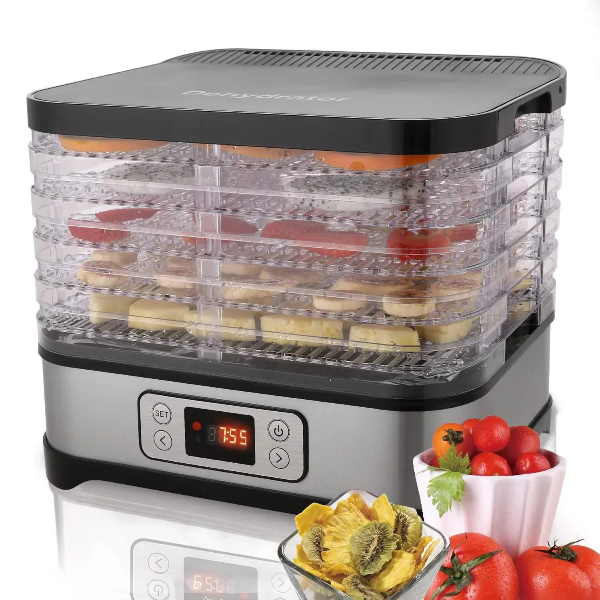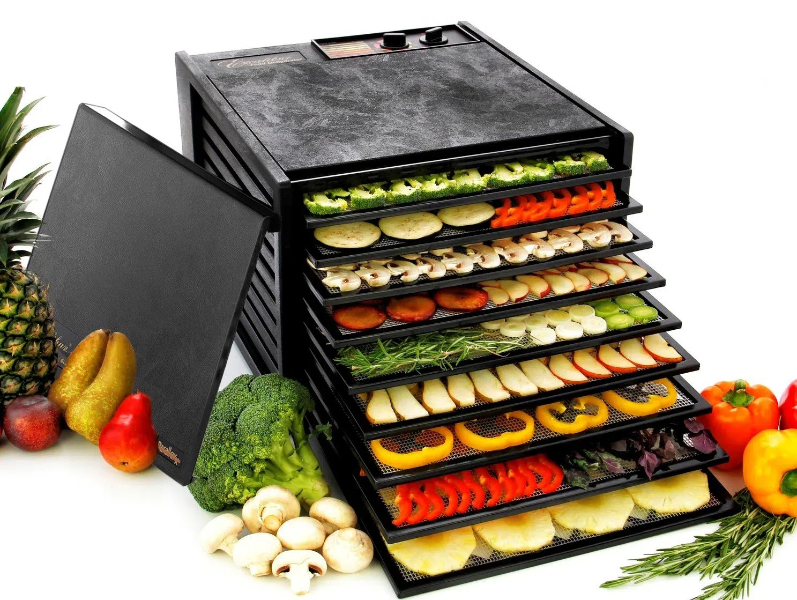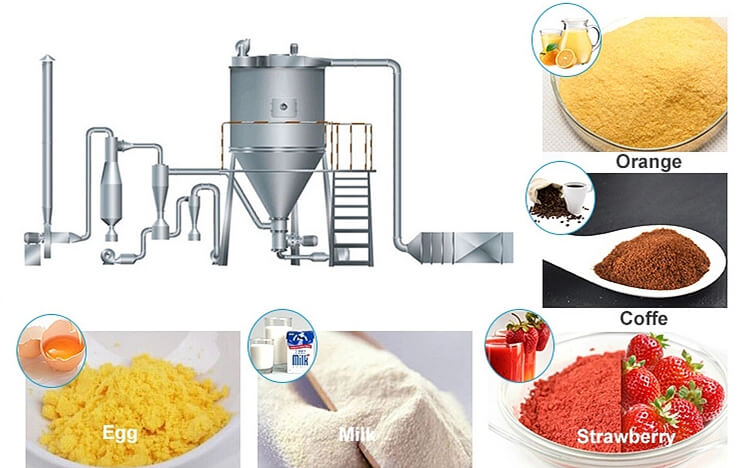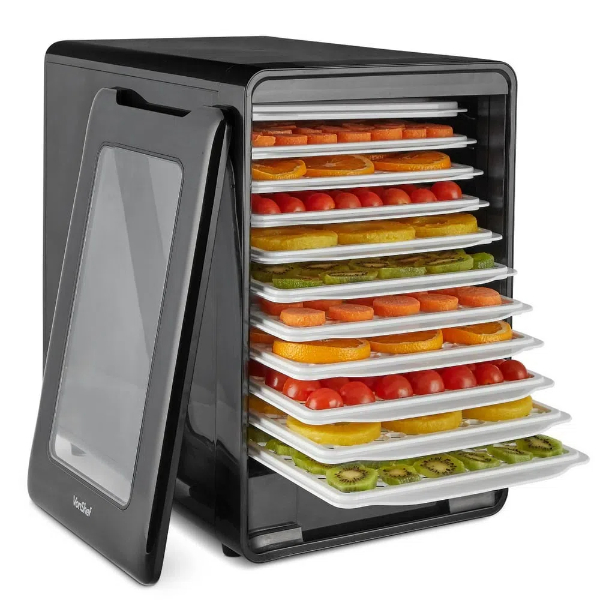
Content Menu
● Introduction
● Understanding Food Dehydrator Machines
>> What is a Food Dehydrator?
>> How Does a Food Dehydrator Work?
● The Benefits of Using a Food Dehydrator Machine
>> 1. Extend Food Shelf Life
>> 2. Preserve Food Nutrients
>> 3. Create Healthy Dehydrated Foods
>> 4. Save Money and Reduce Waste
>> 5. Enhance Flavors
● Types of Food Dehydrator Machines
>> 1. Stackable Tray Dehydrators
>> 2. Shelf Tray Dehydrators
>> 3. All-in-One Dehydrators
● Choosing the Right Food Dehydrator Machine
● Popular Foods to Dehydrate
>> Fruits
>> Vegetables
>> Herbs
>> Meats
>> Other
● Tips for Successful Food Dehydration
● Creative Uses for Dehydrated Foods
● Conclusion
● Frequently Asked Questions
>> 1. What is the ideal temperature for dehydrating most fruits and vegetables?
>> 2. How long does it typically take to dehydrate food?
>> 3. Can I dehydrate frozen fruits and vegetables?
>> 4. How do I know when my food is properly dehydrated?
>> 5. How long can I store dehydrated foods?
Introduction
In today's fast-paced world, where food waste is a growing concern and health-conscious consumers are seeking ways to preserve nutrients in their meals, the food dehydrator machine has emerged as a game-changing kitchen appliance. These innovative devices have revolutionized the way we approach food preservation, offering a simple yet effective method to turn food into dried matter. In this comprehensive guide, we'll explore the fascinating world of food dehydration technology, its numerous benefits, and how you can harness its power to transform your culinary experience.
Understanding Food Dehydrator Machines
What is a Food Dehydrator?
A food dehydrator machine is a specialized appliance designed to remove moisture from various food items, effectively turning them into dried matter. This process not only extends the shelf life of foods but also concentrates their flavors and preserves many of their essential nutrients. By using controlled heat and airflow, these machines can transform fresh fruits, vegetables, meats, and herbs into long-lasting, portable, and often more intensely flavored versions of themselves.
How Does a Food Dehydrator Work?
The principle behind a food dehydrator is relatively simple, yet the technology involved is quite sophisticated. Here's a breakdown of the process:
1. Heat Generation: The machine produces a consistent, low heat, typically ranging from 95°F to 165°F (35°C to 74°C).
2. Air Circulation: A fan circulates the warm air throughout the dehydrator, ensuring even distribution of heat.
3. Moisture Removal: As the warm air passes over the food, it causes the water molecules to evaporate.
4. Ventilation: The moist air is then expelled from the machine, maintaining a dry environment inside.
5. Time: Depending on the food type and desired level of dryness, the process can take anywhere from a few hours to several days.

The Benefits of Using a Food Dehydrator Machine
1. Extend Food Shelf Life
One of the primary advantages of using a food dehydrator machine is its ability to significantly extend the shelf life of various foods. By removing moisture, which is essential for bacterial growth, dehydration can preserve foods for months or even years when stored properly. This makes it an excellent tool for reducing food waste and ensuring you always have a stock of your favorite fruits, vegetables, and herbs on hand.
2. Preserve Food Nutrients
Unlike some other preservation methods that can strip foods of their nutritional value, dehydration technology is known for its ability to retain many essential nutrients. Vitamins, minerals, and enzymes often remain intact throughout the drying process, making dehydrated foods a healthy alternative to many processed snacks.
3. Create Healthy Dehydrated Foods
With a food dehydrator machine, you can easily create a wide variety of healthy snacks and ingredients. From crispy vegetable chips to chewy fruit leathers, the possibilities are endless. These homemade dried snacks are often free from added sugars, preservatives, and artificial additives, making them a nutritious alternative to store-bought options.
4. Save Money and Reduce Waste
By allowing you to buy fresh produce in bulk when it's in season and at its cheapest, a food dehydrator can help you save money in the long run. Additionally, you can dehydrate fruits and vegetables that are slightly past their prime, reducing food waste and making the most of your grocery purchases.
5. Enhance Flavors
Dehydration concentrates the natural flavors of foods, often resulting in more intense and complex taste profiles. This can be particularly beneficial when using dried herbs and spices in cooking, as a little goes a long way in adding flavor to your dishes.
Types of Food Dehydrator Machines
When it comes to choosing a food dehydrator machine, there are several types available on the market, each with its own set of features and benefits:
1. Stackable Tray Dehydrators
These are the most common and often the most affordable options. They consist of a base unit with a heating element and fan, and multiple trays that stack on top of each other. Stackable dehydrators are versatile and allow you to add or remove trays as needed.
2. Shelf Tray Dehydrators
Also known as cabinet or box dehydrators, these units feature removable shelves that slide into a cabinet-like structure. They often provide more consistent drying results and are easier to use, but they can be more expensive and take up more space.
3. All-in-One Dehydrators
These are typically high-end machines that combine dehydration with other functions such as air frying or slow cooking. While versatile, they may not be as specialized for dehydration as dedicated units.
Choosing the Right Food Dehydrator Machine
When selecting a food dehydrator machine to turn food into dried matter, consider the following factors:
1. Capacity: Think about how much food you plan to dehydrate at once and choose a machine with appropriate tray space.
2. Temperature Control: Look for units with adjustable temperature settings to accommodate different types of foods.
3. Timer: A built-in timer can be helpful for precise drying times and preventing over-drying.
4. Noise Level: Some dehydrators can be quite loud, so consider this if noise is a concern in your household.
5. Energy Efficiency: Look for models with good insulation and energy-saving features to keep operating costs down.
6. Ease of Cleaning: Removable, dishwasher-safe trays can make maintenance much simpler.

Popular Foods to Dehydrate
The versatility of food dehydrator machines allows you to experiment with a wide range of ingredients. Here are some popular foods that work well in a dehydrator:
Fruits
- Apples
- Bananas
- Strawberries
- Mangoes
- Pineapples
Vegetables
- Tomatoes
- Carrots
- Zucchini
- Bell peppers
- Onions
Herbs
- Basil
- Oregano
- Thyme
- Rosemary
- Parsley
Meats
- Beef jerky
- Turkey jerky
- Salmon jerky
Other
- Nuts and seeds
- Fruit leathers
- Yogurt drops
Tips for Successful Food Dehydration
To get the most out of your food dehydrator machine and ensure the best results when turning food into dried matter, keep these tips in mind:
1. Prepare foods uniformly: Cut fruits and vegetables into even-sized pieces to ensure consistent drying.
2. Pre-treat fruits: Dip sliced fruits in lemon juice or ascorbic acid solution to prevent browning.
3. Blanch vegetables: Briefly blanch vegetables before dehydrating to help retain color and nutrients.
4. Use the right temperature: Different foods require different drying temperatures. Consult your machine's manual or a dehydrating guide for specific recommendations.
5. Rotate trays: For even drying, rotate the trays periodically during the dehydration process.
6. Allow for proper air circulation: Don't overcrowd the trays, as this can impede airflow and lead to uneven drying.
7. Store properly: Once dehydrated, store foods in airtight containers in a cool, dark place to maintain freshness.
Creative Uses for Dehydrated Foods
Once you've mastered the art of using your food dehydrator machine to turn food into dried matter, the culinary possibilities are endless. Here are some creative ways to incorporate dehydrated foods into your diet:
1. Trail mix: Combine dried fruits, nuts, and seeds for a healthy on-the-go snack.
2. Powders: Grind dehydrated fruits or vegetables into powders to add to smoothies, baked goods, or as natural food coloring.
3. Soup mixes: Create your own instant soup mixes using dehydrated vegetables and herbs.
4. Camping meals: Prepare lightweight, nutrient-dense meals for outdoor adventures.
5. Infused oils: Use dried herbs to create flavorful cooking oils.
6. Pet treats: Make healthy, preservative-free treats for your furry friends.
Conclusion
Food dehydrator machines have revolutionized the way we preserve and enjoy food. By harnessing the power of dehydration technology, these versatile kitchen appliances allow us to turn food into dried matter, extending shelf life, preserving nutrients, and creating a world of culinary possibilities. Whether you're looking to reduce food waste, create healthy snacks, or explore new flavors, a food dehydrator is an invaluable tool for any kitchen enthusiast.
As you embark on your food dehydration journey, remember that practice makes perfect. Don't be afraid to experiment with different foods, temperatures, and drying times to find what works best for you. With time and experience, you'll discover the incredible potential of your food dehydrator machine and the many ways it can enhance your culinary repertoire.

Frequently Asked Questions
1. What is the ideal temperature for dehydrating most fruits and vegetables?
Answer: The ideal temperature for dehydrating most fruits and vegetables is between 125°F and 135°F (52°C to 57°C). This range is low enough to preserve nutrients but high enough to remove moisture effectively and prevent bacterial growth.
2. How long does it typically take to dehydrate food?
Answer: The drying time can vary greatly depending on the type of food, its water content, and the thickness of the slices. On average, fruits can take 6-12 hours, vegetables 4-8 hours, and meats for jerky can take 4-12 hours. Always refer to specific recipes or your dehydrator's manual for precise timing.
3. Can I dehydrate frozen fruits and vegetables?
Answer: Yes, you can dehydrate frozen fruits and vegetables. In fact, frozen produce is often pre-blanched, which can save you a step in the preparation process. However, be aware that the texture of the final product may be slightly different from fresh produce.
4. How do I know when my food is properly dehydrated?
Answer: Properly dehydrated food should be dry to the touch and have a leathery or crisp texture, depending on the food type. Fruits should be pliable but not sticky, while vegetables should be brittle. Meats for jerky should bend without breaking but not be so dry that they snap.
5. How long can I store dehydrated foods?
Answer: When stored properly in airtight containers in a cool, dark place, most dehydrated foods can last 6-12 months. Some items, like dried herbs, can last even longer. However, it's always best to check for any signs of spoilage before consuming stored dehydrated foods.












